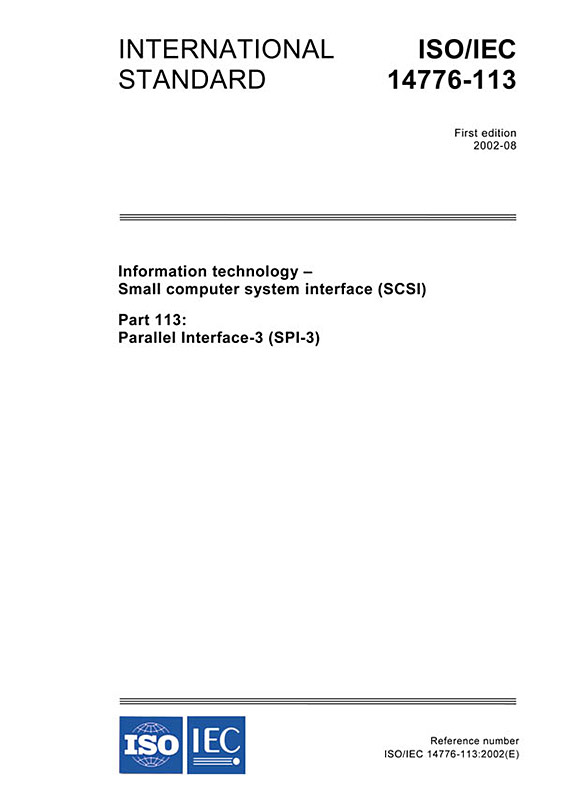ISO/IEC 14776-113:2002
Information technology - Small Computer System Interface (SCSI) - Part 113: Parallel interface-3 (SPI-3)
Ausgabedatum:
2002-08
Edition:
1.0
Sprache: EN - englisch
Seitenzahl: 271 VDE-Artnr.: 210121
The SCSI protocol is designed to provide an efficient peer-to-peer I/O bus with the maximum number of hosts and peripherals determined by the bus width (8 or 16). Data may be transferred asynchronously or synchronously at rates that depend primarily on device implementation and cable length. SCSI is an I/O interface that may be operated over a wide range of media and transfer rates. The objectives of the parallel interface in SCSI are: a) To provide host computers with device independence within a class of devices. Thus, different disk drives, tape drives, printers, optical media drives and other SCSI devices may be added to the host computers without requiring modifications to generic system hardware. b) To provide compatibility such that conforming SCSI-2 and SPI-2 devices may interoperate with SPI-3 devices given that the systems engineering is correctly done. Conforming SCSI-2 and SPI-2 devices should respond in an acceptable manner to reject SPI-3 protocol extensions. SPI-3 protocol extensions are designed to be permissive of such rejections and thus allow SCSI-2 and SPI-2 devices to continue operation without requiring the use of the extensions. This international standard enhances the functionality of the SPI-2 standard, and is intended to be the choice for new designs over the SPI-2 standard. Some new features are: fast-80 data transfers, double transition (DT) transfers, and CRC on parallel transfers.


